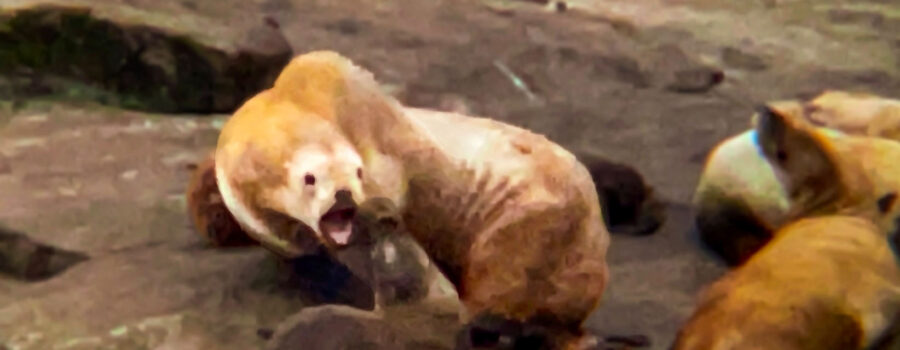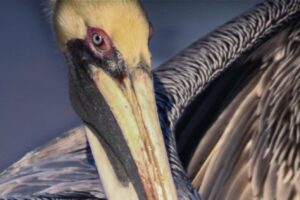Steller’s Sea Lions are an Interesting and Threatened Species

Another incredible animal that we were fortunate enough to see on our Alaskan boat tour were Steller’s sea lions (Eumetopias jubatus), also known as the northern sea lion. Like the harbor seals, they are pinnipeds, but there are many differences between the two species. Probably the most notable difference is that the sea lions are much larger. Sea lions are also able to get their hind flippers up underneath themselves, making them better at moving around on land. Finally, although it’s not always easy to see, sea lions have an external ear flap, something that seals lack. Like seals, sea lions spend part of their time in the water foraging for food, which mainly consists of fish, squid, and octopus, and part of their time hauled out on land where they rest, breed, give birth, and care for their young. And like seals, sea lions tend to be gregarious, especially when on land.

Steller’s sea lions are the only species within their genus, but they are still pretty closely related to the better known California sea lions that live further south. Steller’s sea lions have a fairly limited range, being found mainly along the southern coast of Alaska, the western coast of British Columbia, and the southwestern coast of Russia. Strays can sometimes be found as far south as California or Japan. Although considered one species, the population is divided into a western population and an eastern population (with some overlap) depending on where their rookeries are located. Both populations have undergone serious declines. The eastern population has stabilized, and even rebounded somewhat and is now considered near-threatened, while the western population continues to decline and was declared threatened in 1997. They are currently being carefully studied, and quite a few factors are considered to be contributing to their decline. Not surprisingly, most of those factors are either directly or indirectly a result of human habits. Some of these including human over fishing, rookery disturbances by boats and drones, entanglement in fishing gear, global warming, and toxin ingestion.

I consider myself to be fortunate to have been able to see these amazing animals while they still exist. The Marine Mammal Protection Act and the Endangered Species Act are currently providing them with a great deal of protection from direct human threats, but the indirect threats are more difficult to control. Hopefully, with further study and further protection, the western population can make the same turn around that the eastern population has.





Recent Comments